Case Report - (2019) Volume 7, Issue 5
Platelet Rich Fibrin (PRF) for Treatment of Oroantral Fistula: A Case Report
*Correspondence: Noor Mohammed Al-Noori, Department of Oral Surgery and Periodontology, College of Dentistry, Mustansiriyah University, Baghdad, Iraq, Email:
Abstract
Oroantral fistula is a pathological communication between oral cavity and maxillary antrum; commonly occurring after extraction of maxillary posterior teeth. Occasionally soft tissue closure is used in treatment of this defect but sometimes the soft tissue closure alone is not enough, so using of adjuvant material like Platelet Rich Fibrin is indicated. It is an autologous biomaterial; platelets and leukocytes of the blood in a strong natural fibrin matrix construct a complex structural design with excellent healing index. In this case report: after flap retraction and removing of the fistulas epithelial ling, Platelet rich fibrin used with soft tissue closure, then the follow up after 7-10-30 days show closure of the defect and cessation of symptoms after 10 days.
Keywords
Oroantral fistula, Platelet rich fibrin, Maxillary sinuses, Oral surgery
Introduction
Oroantral fistula is "a pathological condition in which the oral cavity and sinus have permanent communication through fibrous connective tissues lined by epithelium" [1]. Oroantral fistula is most commonly caused by extraction of teeth that related to maxillary antrum that can lead to contamination of the maxillary antrum by bacteria, causing a chronic sinusitis [2,3].
Factors that increase the incidence of oroantral fistula, include lack of a antral bone floor and direct relation of the antral lining above the maxillary premolar and molar teeth [4]. Other factors that may increase the risk of formation of the fistula are: resorption of alveolar bone due to periodontal disease and traumatic extraction [5]. Valsalva maneuver is the way for diagnoses of this complication in its early stages [3]. There are several consequences on maxillary antrum when the pathological connection between oral and antrum cavities present; One of them: chronic onesided sinusitis with or without purulent secretion, and also discomfort during nutrition or slurred speaking [6,7]. Oroantral defect could be effectively treated if early diagnosed. An essential factor is size of defect in determining which technique should be use. Small defect can heal naturally, but the sinus should be healthy because any defect can cause incomplete healing [8].
Management of Oroantral Fistula
Soft tissue closure
Buccal Flap: excising of the epithelialized margins, then 2 vertical releasing incisions done to improve a flap with acceptable size for closure of the oroantral fistula. The flap then positioned over the defected area and sutured [9].
Palatal Flap: after epithelium excision from the edges, the palatal fibro-mucosal incision should be made and raise a flap with posterior base, that supplied by the greater palatine artery. The extension of the flap anteriorly must be with adequate width to compensate the diameter of the bony defect and with adequate length to permit lateral rotation [10].
Buccal Pad of Fat Flap: made an incision in posterior mucosa in the zygomatic buttress area, then a periosteal incision is made. Incision then made in fascia that enclosing the buccal pad of fat. A kind separation is done with fine artery forceps for exposure the yellowish fat [9].
Two flap technique: The benefit of using 2 flaps is to provide steady epithelial layer that repaired to cover the defect. This procedure reduces the prevalence of dehiscence of flap and infection postoperatively. This diminishes the hazards of wound breakdown and relapse of the defect [11].
Other closing technique
In the literature Bone autografts have been recommended for closing oroantral fistula.
Auricular cartilage can be used.
Transplantation of wisdom molar is fit for closure of defect without need for prosthetic appliance [12].
"Sandwich technique" for the closure of the defect, both hard and soft tissue closing was reached. In this technique "a bone grafting material was sandwiched between two sheaths of a bio-resorbable membrane for the hard tissue closure of oroantral defect" [10].
Lyophilized fibrin seal use to whole closure of oroantral defect by single use. The sealant mix can be positioned above the floor of the antrum so the clot will protected from air flow [10]. 6- Low doses LASER furthermore used successfully for closing the defect [13].
In the last years, different procedures have been established to encourage bone and soft-tissue regeneration [14]. The advance of bioactive surgical extracts to reduce inflammation and increase healing procedure. Platelet rich fibrin (PRF) is natural and with acceptable results and low risks. Several advantages and indications of PRF due to it is insignificant risks, easy technique and adequate clinical effects [15].
Case Report
A 35 years old, healthy with no history of any systemic disease, nonsmoker male patient attending the educational clinic of department of oral surgery, college of dentistry, Mustansiriyah University. The patient had history of upper left second premolar extraction before 6 months with complication of oroantral fistula (Figure 1A), patient suffering from air and discharge from the defect and with history of 2 surgical trying for closing the fistula with buccal advancement flap but didn’t solve the problem.
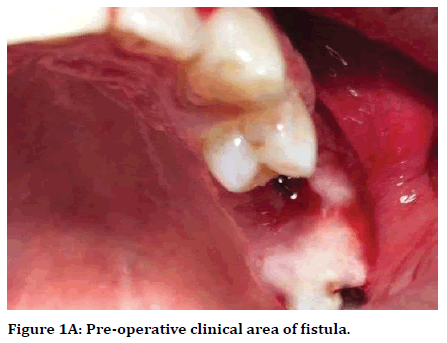
Figure 1A. Pre-operative clinical area of fistula.
After carful history taking, clinical examination, panoramic X-ray and periapical X-ray (Figure 1B) that made me to choose of using (PRF) with surgical procedure.
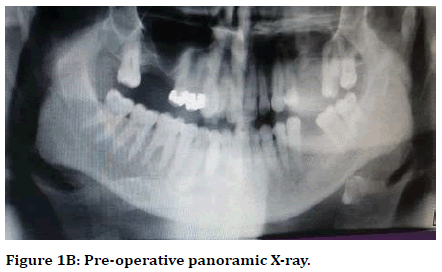
Figure 1B. Pre-operative panoramic X-ray.
Surgical steps of treatment
• Anaesthesia: Infiltration of 2% lidocaine anesthetic solution with 1:100,000 epinephrine at buccal and palatal sides of the operating area.
• Incision and flap retraction (Figure 2A): The incision made with no.15 blade, three sided flap designed and retracted by using molt type periosteal elevator.
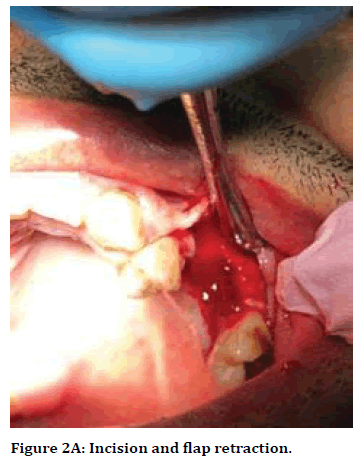
Figure 2A. Incision and flap retraction.
• Excision of epithelial lining of the fistula by using the surgical curette with copious irrigation with normal saline (Figure 2B).
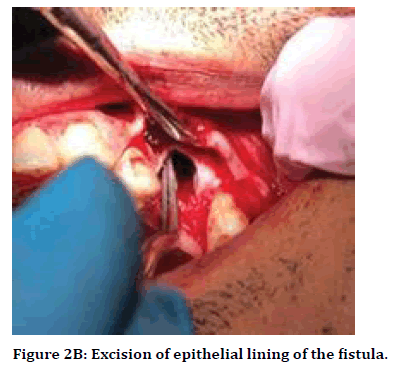
Figure 2B. Excision of epithelial lining of the fistula.
• After removing of all epithelial lining tissue and cleaning the area (Figure 2C), starting the preparation of PRF. Collection of 10 ml of blood from the median cubital vein in the antecubital fossa by using disposable plastic syringe and transport blood to plane glass tube that centrifuged for 15 min at 3000 rpm in centrifuge. After that the PRF separated from the other parts of blood and transported to clean sterilized gauze (Figure 3A).
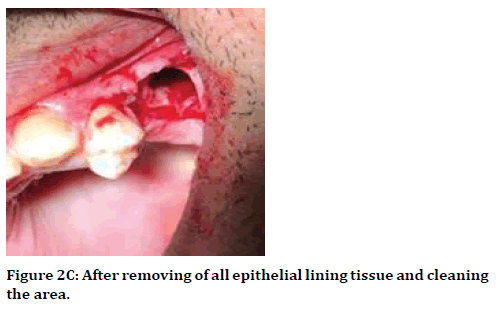
Figure 2C. After removing of all epithelial lining tissue and cleaning the area.
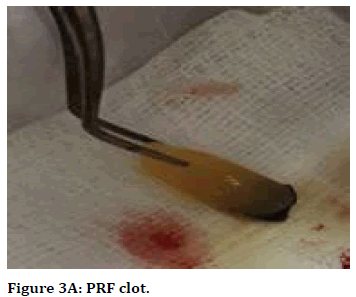
Figure 3A. PRF clot.
• Application of PRF in the surgical area (Figure 3B) and suturing the flap with simple interrupted suture using 3\0 black silk suture.
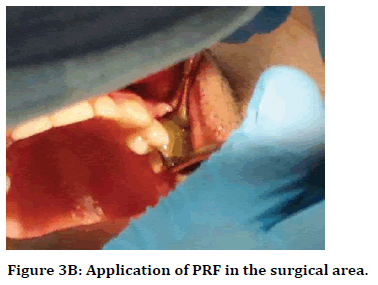
Figure 3B. Application of PRF in the surgical area.
• Instruction and treatment: Instructed the patient to not blowing the nose, no using of straw, avoiding any negative pressure, keep the area clean and use the medication. The medication prescribed are antibiotics: Augmentin 625 mg three times daily, Metronidazole 500 mg twice daily, nonsteroidal anti-inflammatory drugs: Mefenamic acid 500 mg three times daily, nasal decongestant: Ephedrine nasal drops 0.5% 1 drop three times daily and mouth wash: Chlorhexidine mouth wash twice daily. These medication used for five days.
• After 10 days the sutures removed and other periapical X-ray taken. At this time the patient show his comfortable for closing the opening and no present of air and discharge.
• After one month another follow up visit done and the clinical examination show closure of the fistula (Figure 4A) and another periapical X-ray done (Figure 4B).
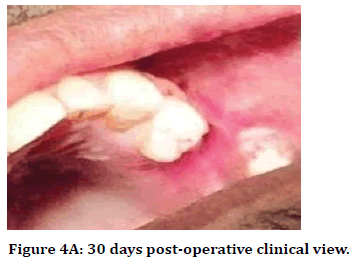
Figure 4A. 30 days post-operative clinical view.
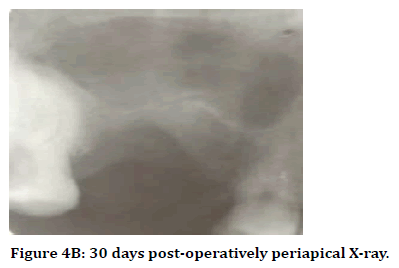
Figure 4b. 30 days post-operatively periapical X-ray.
Discussion
The gold point in treatment of oroantral fistula is complete removing and curation of lining epithelium to reach intact bone and removing of the edges of the oral opening of the fistula to reach intact soft tissue in order to reach the complete healing of the oroantral fistula.
And this agrees with Khandelwal, et al. that reported: Basic principles that must be carefully reached when surgically treated oroantral fistula: The primary principle is that the antrum must be healthy with no infection and sufficient nasal drainage. Another principle is tension free closing and consists of wide based, well vascularized flap above the undamaged bone. To close the oroantral fistula successfully; complete eradication of any antral pathology: tract, infection, disintegrated mucosa and contaminated bone [10].
The preparation of PRF was fast and easy, and the use of PRF shows interesting, faster and complete soft tissue healing. That makes the use of PRF very useful in our field especially when we need fast healing.
Choukroun et al. in was the first that used PRF, especially in oral and maxillofacial surgery, and is at this time considered as a new generation of platelet concentrate. PRF be made up of a matrix of autologous fibrin and has several advantages including easy preparation and not requiring chemical manipulation of the blood, which makes it strictly an autologous preparation [15].
PRF with its exceptional consistency and its biological structures shows remarkable surgical usefulness and all the features that support a faster tissues redevelopment and excellence clinical results [16].
Conclusion
Preparation technique of this biomaterial is simple and low-cost procedure (only centrifuge and test tube need) with high soft tissue healing capability, appears to be a very favorable option in treatment of oroantral fistula.
References
- Leonardo Gomes de Lima, Ana Larisse Carneiro Pereira, Jefferson David Melo de Matos, et al. Treatment techniques for oroantral communications and fistulas. Int J Adv Res 2018; 6:634-648.
- Kapustecki M, Niedzielska I, Borgiel-Marek H, et al. Alternative method to treat oroantral fistula and fistula with autogenous bone graft and platelet rich fibrin. Med Oral Patol Oral Cir Bucal 2016; 21:608–613.
- Samy Amroun, Yassine Zouari, Ayman Bouattour. Closure of an oroantral fistula by bone autograft: A case report. J Oral Med Oral Surg 2018; 24:143-148.
- Kim MK, Han W, Kim SG. The use of the buccal fat pad flap for oral reconstruction. Maxillofac Plast Reconstr Surg 2017; 39:5.
- Killey HC, Kay LW. Observations based on the surgical closure of 362 oro-antral fistulas. Int Surg 1972; 57:545–549.
- Del Rey-Santamaría M, Valmaseda Castellón E, Berini Aytés L, et al. Incidence of oral sinus fistulas in 389 upper third molar extraction. Med Oral Patol Oral Cir Bucal 2006; 11:334–338.
- Hernando J, Gallego L, Junquera L, et al. Oroantral fistulas. A retrospective analysis. Med Oral Patol Oral Cir Bucal 2010; 15:499–503.
- Guhan Dergin, Yusuf Emes, Cagrı Delilbas, et al. Management of the Oroantral Fistula. A Textbook of Advanced Oral and Maxillofacial Surgery. 2016; 3:16.
- Borgonovo AE, Berardinelli FV, Favale M, et al. Surgical options in oro-antral fistula treatment. Open Dent J 2012; 6:94-8.
- Khandelwal P, Hajira N. Management of oro-antral communication and fistula: Various surgical options. World J Plast Surg 2017; 6:3-8.
- Ziemba RB. Combined buccal and reverse palatal flap for closure of oroantral fistula. J Oral Surg 1972; 30:722-30.
- Ogunsalu C. A new surgical management for oro-antral communication. The resorbable guided tissue regeneration membrane – bone substitute sandwich technique. West Indian Med J 2005; 54:261.
- Dym H, Wolf JC. Oroantral communication. Oral Maxillofac Surg Clin N Am 2012; 24:239–47.
- Al-Maawi S, Herrera-Vizcaino C, Dohle E, et al. Homogeneous pressure influences the growth factor release profiles in solid platelet-rich fibrin matrices and enhances vascular endothelial growth factor release in the solid platelet-rich fibrin plugs. Int J Growth Factors Stem Cells Dent 2018; 1:8-16.
- Eduardo Borie, Daniel García Oliví, Iara Augusta Orsi, et al. Platelet-rich fibrin application in dentistry: a literature review. Int J Clin Exp Med 2015; 8:7922-7929.
- Giannini S, Cielo A, Bonanome L, et al. Comparison between PRP, PRGF and PRF: Lights and shadows in three similar but different protocols. Europ Rev Medical Pharmacol Sci 2015; 19: 927-930.
Author Info
Department of Oral Surgery and Periodontology, College of Dentistry, Mustansiriyah University, Baghdad, IraqCitation: Noor Mohammed Al-Noori, Platelet Rich Fibrin (PRF) for Treatment of Oroantral Fistula: A Case Report, J Res Med Dent Sci, 2019, 7 (5):17-20.
Received: 24-Jul-2019 Accepted: 30-Aug-2019
